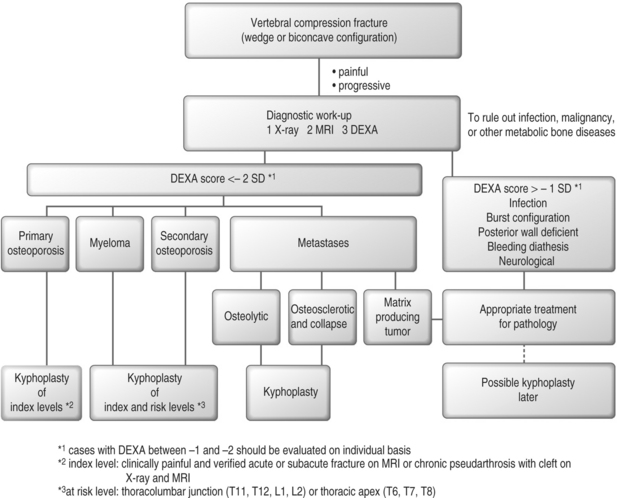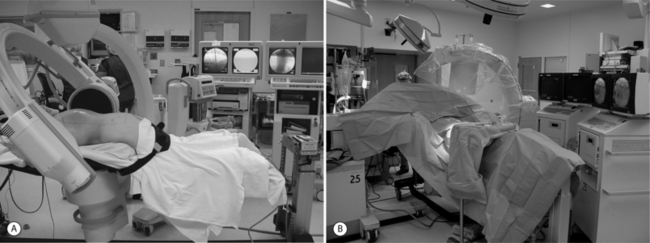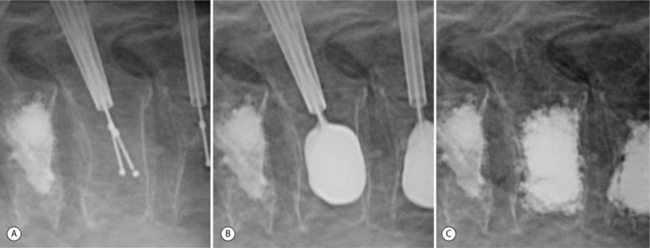CHAPTER 45 Kyphoplasty
INTRODUCTION
The National Osteoporosis Foundation estimates that over 100 million people worldwide, and nearly 30 million in the United States, are at risk to develop fragility fractures secondly to osteoporosis. In the United States there are an estimated 700 000 pathological vertebral body compression fractures each year, of which over one-third become chronically painful (Fig. 45.1).1,2 Although the standard of care for most other fragility fractures including hip and wrist fractures is immediate reduction and stabilization, vertebral body compression fractures are traditionally treated with medical modalities and only rarely treated with surgical modalities (Fig. 45.2). This benign neglect arose because open surgical repair of these fractures was too invasive, with poor outcomes. Unfortunately, the medical management of painful fractures (bed rest, hospitalization, narcotic analgesics, and bracing) does nothing to restore spinal alignment and may compound the problem. Just as unfortunate and due to its inherent risks, invasive nature, and the poor quality of osteoporotic bone, surgical treatment of vertebral body compression fractures has traditionally been limited to cases where there is concurrent spinal instability or neurologic deficit.
In response to the limited results of medical and surgical modalities, to stabilize and strengthen the collapsed vertebral bodies, interventional neuroradiologists, first in France and now the US, initiated percutaneous bone cement injections.3,4 Direct cement injection or ‘vertebroplasty’ has been shown to reduce fracture pain. Vertebroplasty, however, does not address the spinal deformity. Also, this technique requires a forced cement injection using low-viscosity, slow-curing cement, thus increasing the risk of cement leaks through the fracture clefts or the venous sinuses.
‘Kyphoplasty’ is a minimally invasive technique for the treatment of osteoporotic or osteolytic painful progressive vertebral wedge compression fractures (VCFs). This technique has a number of benefits and potential advantages over traditional medical and surgical treatment modalities for VCFs. It involves the introduction of a cannula into the vertebral body, followed by insertion of an inflatable bone tamp (IBT) designed to elevate the endplates and reduce the vertebral body back towards its original height, while creating a cavity to be filled with bone cement (Fig. 45.3). By reducing the vertebral body back towards its native height the sagittal alignment of the spine is restored, providing patients with cosmetic and functional improvement.5–7 This also acts to potentially protect other levels from collapse by alleviating the force transmission associated with a kyphotic posture.8,9 By creating a cavity the cement augmentation is performed with more control by depositing into the preformed cavity partially cured cement, thereby reducing the risk of cement extravasation. By stabilizing the vertebral body, pain from the progressive fracture collapse or altered biomechanics can be minimized or even eliminated. The first kyphoplasty was performed in August, 1998, and up to January, 2004, over 30 000 patients in the United States have had kyphoplasty procedures for over 40 000 fractures. In preliminary reports well over 90% of patients attained significant pain relief. The data from the recent published reports also indicate that kyphoplasty has a significant positive effect on spinal malalignment and patient quality of life.5–7
INDICATIONS
Kyphoplasty is currently indicated for progressive, painful osteoporotic or osteolytic vertebral body wedge compression fractures. Similar to any other fragility fracture the goals are to restore stability, anatomical alignment, and function as soon as safely possible. Even though the quoted natural history of vertebral compression fractures is for two-thirds of the patients to eventually become pain free, one must appreciate that not one of those vertebral bodies ever regains its normal height, and that the presence of a vertebral collapse predicts both increased mortality and a fivefold increase in further fractures at adjacent or remote levels within 1 year.10–12 If one subscribes to the philosophies of spinal biomechanics and appreciates that ‘kyphosis begets kyphosis,’ especially in the face of low bone density, then it only makes sense to intervene before the deformity progresses significantly, in order to minimize the effects of sagittal imbalance on the spine. Pain relief then becomes the secondary indication and protection of sagittal spinal alignment becomes the primary indication. The results of vertebral augmentation seem most predictable with immediate intervention.
CONTROVERSIES
There exists a certain level of debate regarding the number of levels to augment and the indication for prophylaxis in the setting of vertebral compression fractures. Vertebroplasty proponents are more liberal in recommending multiple levels at any one time. One must, however, consider the volume of cement and the potential for monomer toxicity. It is well established that cement monomer is arrythmogenic and cardiotoxic at the volumes used for a total hip or knee replacement. The risk appears to be somewhere in the neighborhood of 1 in 3000 to 1 in 5000.13,14 Taking into account the volume of cement (6 cc per level) and the direct access to the cardiovascular system, and then assuming one is willing to accept the same degree of risk, then it seems most appropriate to limit vertebroplasty or kyphoplasty to one or two levels at any surgical setting. Kyphoplasty does have a built-in advantage to vertebroplasty in that the technique dictates a thicker partially cured cement be poured into the cavity in a controlled fashion rather than a highly liquid cement forced into the closed space of the collapsed vertebral body. The liquid cement of vertebroplasty has more free monomer available to enter the circulation and the liquid cement will obey the laws of fluid dynamics seeking out the path of least resistance, thus readily entering the venous sinuses or exiting through the vertebral body fissures and cracks, resulting in more cement leaks.
EVIDENCE-BASED OUTCOMES
In the authors’ ongoing Institutional Review Board approved study,5–7 over 900 consecutive kyphoplasty procedures were performed in over 300 patients between April, 1999, and February, 2004. The mean age was 69 years (range 35–89). The mean duration of symptoms was 7 months. Outcome data were obtained by administering the Short Form-36 health survey (SF-36) and visual analog scale (VAS) for pain rating; additionally, the patients underwent detailed neurological and radiographical examinations pre- and postoperatively (Fig. 45.4). Perioperative and clinical follow-up revealed that the procedure was well tolerated with improvement in pain and early mobilization. The levels treated ranged from T3 to L5 with 47% of the vertebrae at thoracolumbar junction. Length of stay ranged from 0.5 day to 9 days (mean 1.1 day). In the experience of the authors there were no clinically significant cement leaks and no perioperative complications attributable to the inflatable bone tamp or tools. Pre- and postoperative SF-36 data are available on over 230 patients (72%) with follow-up ranging from 1 week to 59 months (mean 14 months). SF-36 scores improved in every category, statistically significant in all but the general health modality. Physical function improved from 22.0 to 36.0 (p=0.0001). Role physical improved from 9.3 to 27.3 (p=0.0001). Bodily pain improved from 22.4 to 41.9 (p=0.0001). Vitality improved from 31.4 to 40.7 (p=0.0001). Social function improved from 37.7 to 61.2 (p










